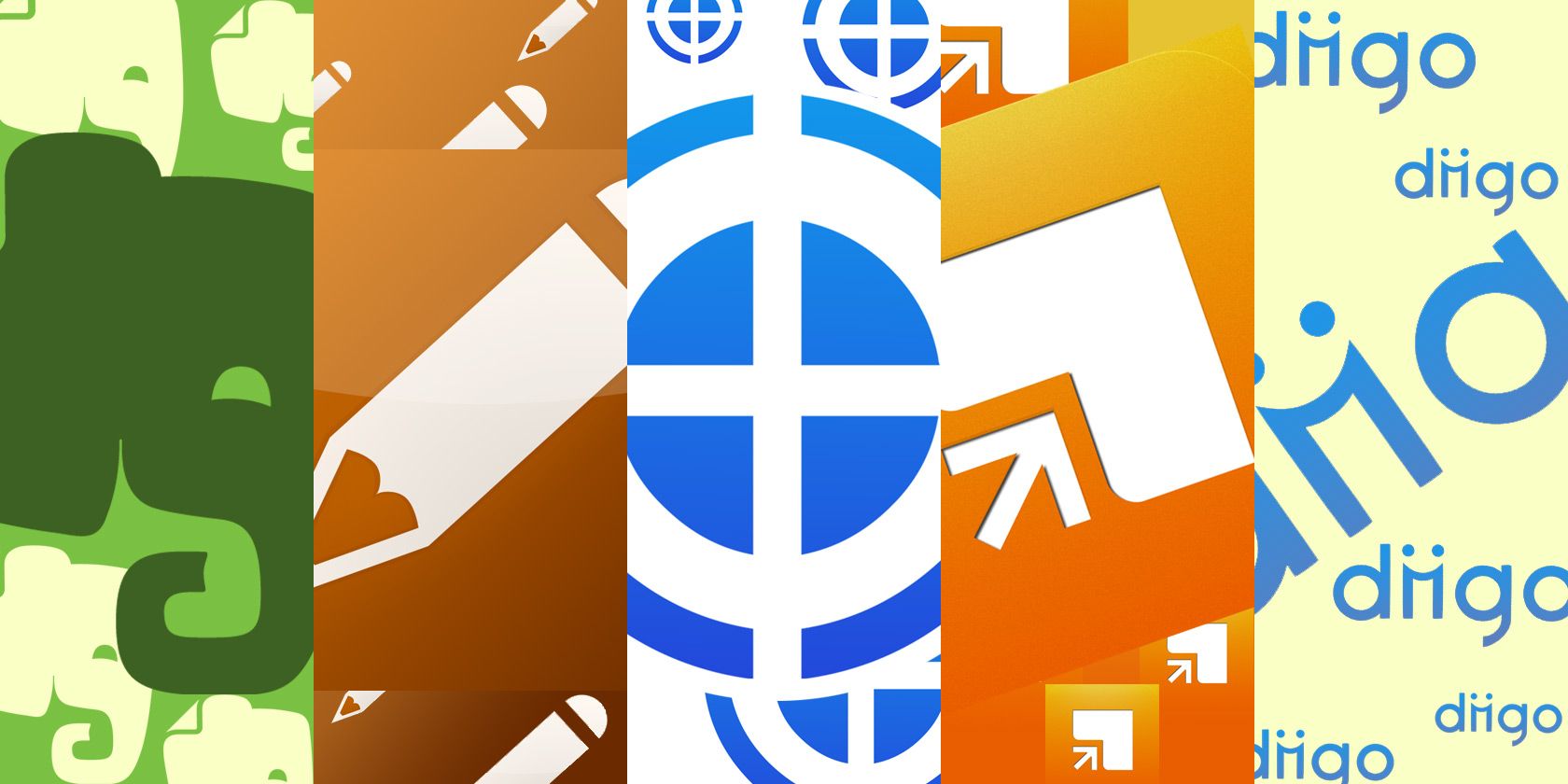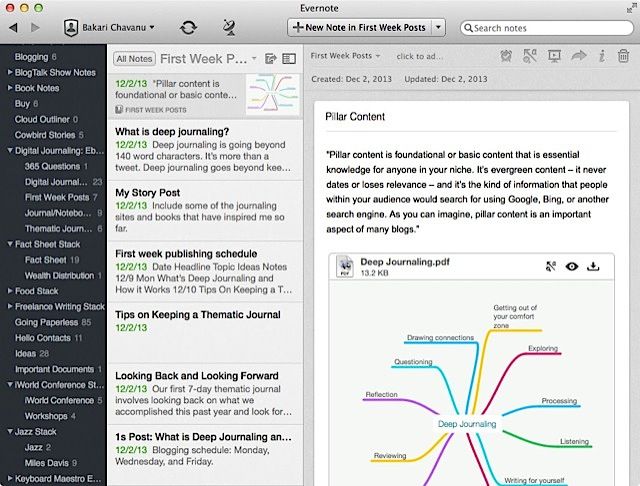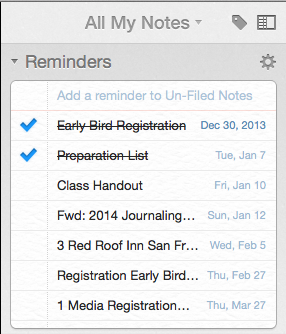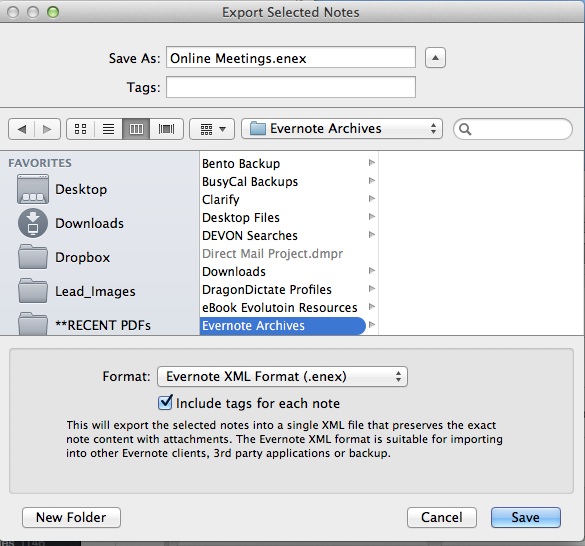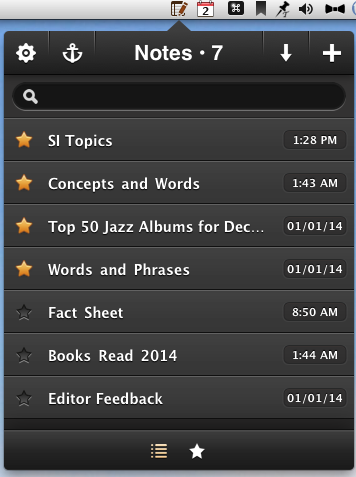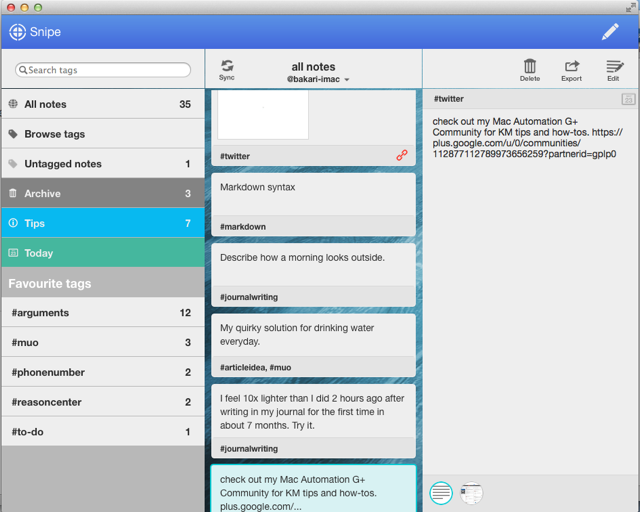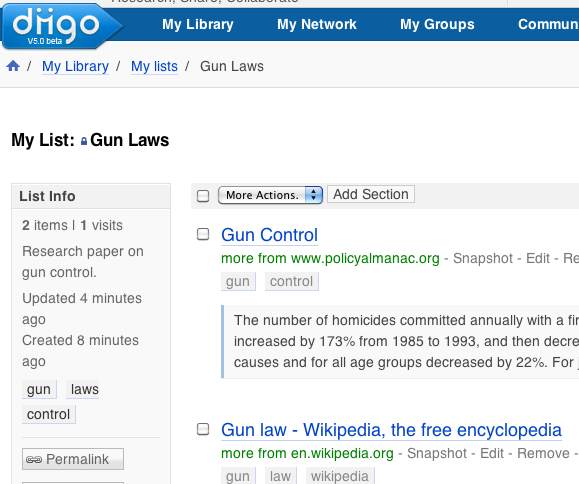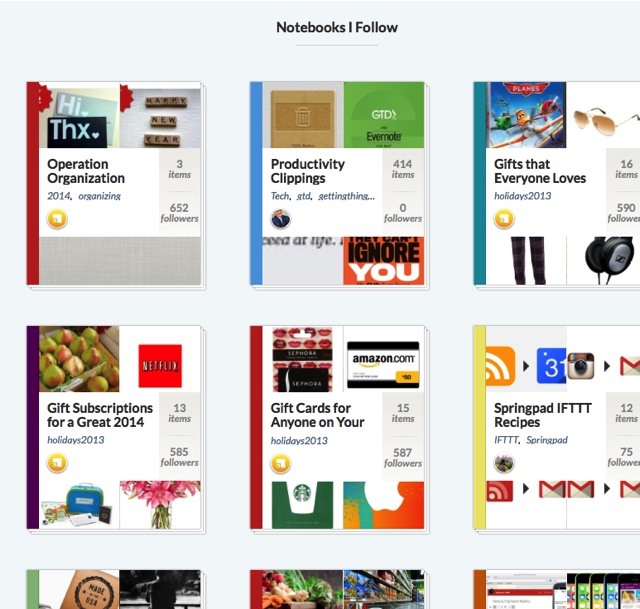I use five different notebooks. Why? Because each has a distinct purpose or feature that helps me stay productive.
Before arriving at this method I used to dump all kinds of stuff into Evernote or Springpad, but a lack of order meant I would forget what I filed away in those applications. This made me dread opening Evernote because it was so bloated with documents and notes.
After experimenting with many different notebook-keeping strategies I have decided that to be useful, a notebook needs to a have practical purpose, and it needs to be used on a regular basis. I no longer solely rely on Evernote, and find my current solution of five notebooks to be far more productive.
Evernote For Projects
It's easy to dump nearly everything in Evernote, from grocery lists and web clippings, to huge PDFs. But Evernote can become bloated with too many documents, making it overwhelming to browse and find stuff — even using the search and tagging features.
A few months ago, I started deleting and archiving (explained below) unused notebooks or ones that only had a few notes added to them in the last year or more. That helped me better figure out my primary use for Evernote, instead of using it for everything, as the company recommends.
Because of Evernote's Reminders and annotation features, I now try to use Evernote for collecting research for major writing projects, event and workshop planning, materials for conferences I attend, book reading notes, job related resources, and important receipts.
The Reminders feature is what makes Evernote more practical to use. For example, when I'm planning a workshop, I can assign reminder alarms to to-do lists and documents that show up on all my Mac and iOS devices. No longer do I have a need for separate calendar alarms or a to-do list application to manage my projects, Reminder alarms in Evernote get linked to relevant documents and notes.
To archive a notebook, right-click on it and select Export Notes... in the drop-down menu. Save the resulting .enex file (which can be imported back into Evernote) to your computer's Finder or external drive.
NotesTab Pro For Lists
I recently started using NotesTab Pro ( $4.99 Mac version) for a single purpose: to access notes from the Mac menu bar. I use NotesTab solely for creating and reviewing lists of ideas and items that I need to reference while working, or that I compile over time (articles ideas, book lists, useful words and phrases, jazz albums.).
My NotesTab will never become cluttered with notes like the other notebooks I use, and I will always know exactly what is there. If I end up not referencing a note page for on a regular basis, I will either delete it or move it to Evernote.
I also chose NotesTab Pro because it's multi-platform, allowing me to sync and review content with its iOS version ($0.99).
Snipe For Scratch Notes
I reviewed Snipe back in October. It is another cross-platform iOS and OS X application [No Longer Available] I use like I would a paper notebook for quickly jotting notes (phone numbers, quotes, ideas) that don't particularly need to go into Evernote.
Sometimes I remember things better by just writing them down, and Snipe serves that purpose very well. I don't really need to mange Snipe content that much, but I do tag some items for reviewing them later.
Diigo: Reading and Annotation Notebook
Instead of bookmarking articles in Evernote that I want to read later (that are not tied directly tied to a writing project) I mainly use the annotation service Diigo and the read-later bookmarking service Pocket for reading on my iPad.
Because I can't share articles from my favorite news reader, Zite directly to Diigo, I use an IFTTT recipe that automatically sends articles bookmarked in Pocket to my Diigo account, where I can read, highlight, and annotate them later.
By using Diigo as a notebook (online and its iPad app [No Longer Available]) I don't clutter up Evernote or Springpad with a bunch of website articles that I will probably never review more than a few times. Diigo is cross-platform and it reads great on the iPad Air.
Follow Springpad Notebooks
Though I find Springpad more visually appealing than Evernote, Springpad unfortunately is not as well supported by other apps as Evernote. I still create Springpad notebooks for several different topics and projects, and I also follow the notebooks (and share my own) of other users, similar to how it's done on Pinterest.
The iOS version of Springpad [No Longer Available] also reads great on the iPad, but adding content to Springpad is more easily done using its web browser clipper.
The Best Notebook?
There's no single notebook that can do everything. You may not need to use five different notebooks like I do, but if you find using Evernote or another similar notebook not as productive as you would like, think about what features are missing that keep you from using a notebook effectively. You may end up needing to use more than one, like I do.
Let us know about your digital notebook keeping strategies and what features you would like see added in the above notebooks to make them more useful.

